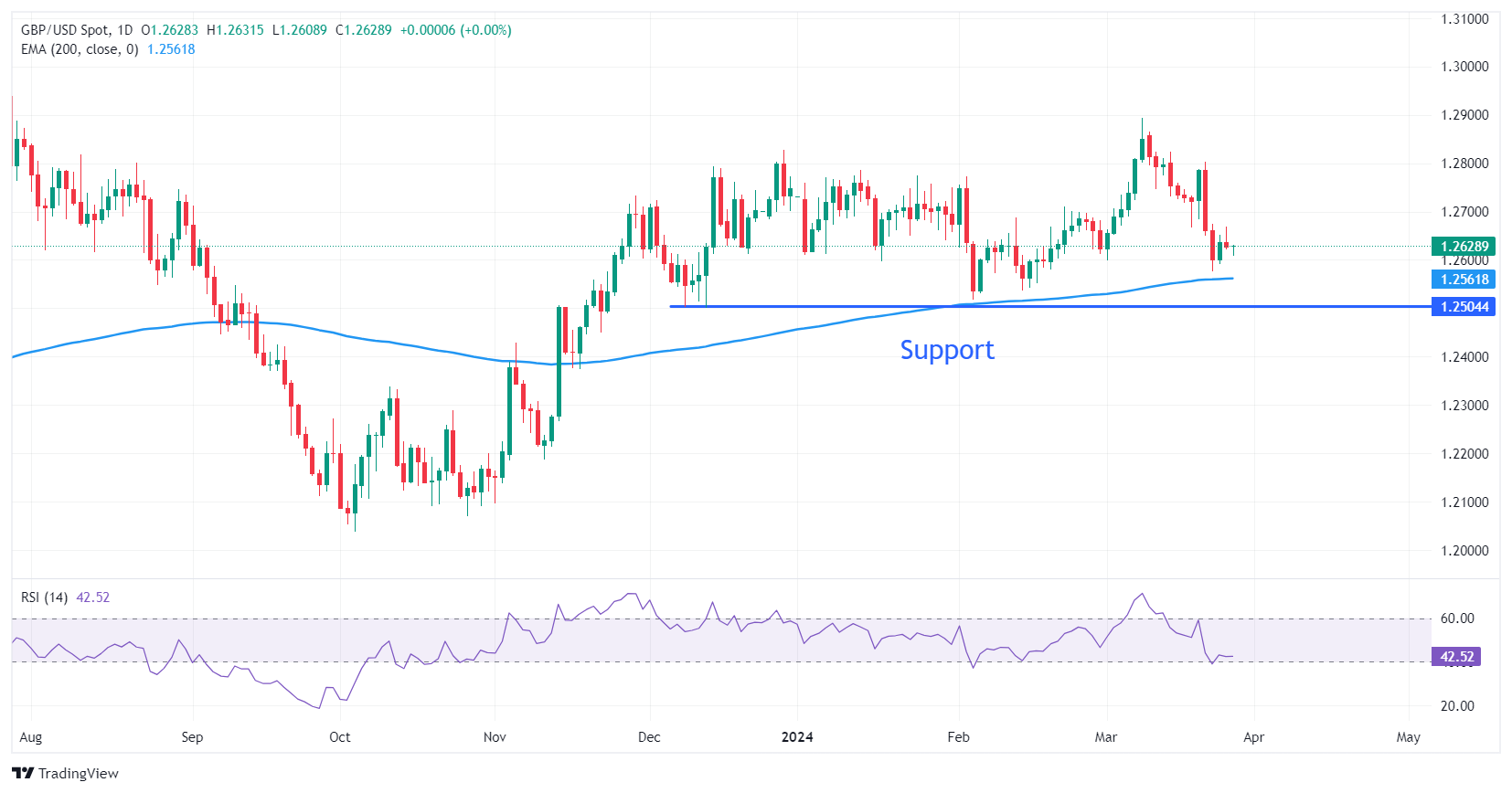Pound Sterling finds support though firm BoE rate cut hopes keep upside limited

- The Pound Sterling finds support even though investors expect the BoE to cut rates sooner than expected.
- BoE Bailey said market expectations for two or three rate cuts this year are not unreasonable.
- The main event for this week will be the US core PCE price index data for February.
The Pound Sterling (GBP) finds cushion near 1.2600 in Wednesday’s European session. The broader appeal remains weak as investors expect the Bank of England (BoE) will start reducing interest rates sooner than previously anticipated. To a certain extent, the BoE has turned dovish on the interest rate outlook as the United Kingdom’s inflation is softening.
In a recent interview with the Financial Times, BoE Governor Andrew Bailey said market expectations for rate cuts this year are not unreasonable. About the inflation outlook, Bailey said “We are not seeing a lot of sticky persistence.”
The US Dollar Index (DXY), which values the Greenback against six foreign currencies, retreats from 104.40. Going forward, the United States core Personal Consumption Expenditure price index (PCE) data for February, which will be published on Good Friday, will guide the major move in the US Dollar.
Daily digest market movers: Pound Sterling discovers support as US Dollar surrenders intraday gains
- The Pound Sterling rebounds from the crucial support of 1.2600 as the US Dollar surrenders intraday gains. The US Dollar could recover amid caution ahead of the United States core PCE price index data for February. The Federal Reserve’s (Fed) preferred inflation measure could provide some cues about when the central bank could start reducing interest rates.
- Stubborn inflation and a strong economic outlook in the US could allow the Fed to delay its rate cut plans. The Fed’s latest dot plot, released last week, pointed to three rate cuts for this year, but a slower progress in inflation declining to the 2% target could also result in fewer cuts.
- Meanwhile, market expectations for the Bank of England’s interest rate outlook will drive the next move in the Pound Sterling. A sharp decline in the UK’s inflation data for February has uplifted expectations for the BoE to begin reducing interest rates early in the June policy meeting. Before the release of the soft inflation data and slightly dovish interest rate guidance from the BoE, rate cuts were majorly expected starting from the August meeting.
- In its last meeting, the BoE was observed as slightly dovish as no policymaker voted for a rate hike for the first time since September 2021. Catherine Mann, who remains a hawk, dropped her rate hike call as she observed that consumers are reluctant to pay higher prices on services such as travel and hospitality, she said in an interview with Bloomberg. Mann added that firms are cutting working hours in times when more employment is required. She further added that the number of workers in the labor market will increase due to the government’s cuts to social security rates.
- This week, the UK’s economic calendar is light. Investors will look for revised Q4 2023 Gross Domestic Product (GDP) estimates. Any significant change from preliminary estimates will influence the Pound Sterling. The preliminary estimates showed that the UK economy entered a technical recession in the second half of 2023 after contracting by 0.3% in the October-December quarter.
Technical Analysis: Pound Sterling finds interim support near 1.2600
The Pound Sterling discovers some buying interest near the round-level support of 1.2600. The GBP/USD pair falls after facing stiff resistance while extending the upside above the 1.2660 hurdle. The pair trades slightly higher than the 200-day Exponential Moving Average (EMA), placed around 1.2565. The asset would extend its downside if it drops below the 200-day EMA.
The 14-period Relative Strength Index (RSI) slips to near 40.00. If it dips below this level, a bearish momentum will trigger.
